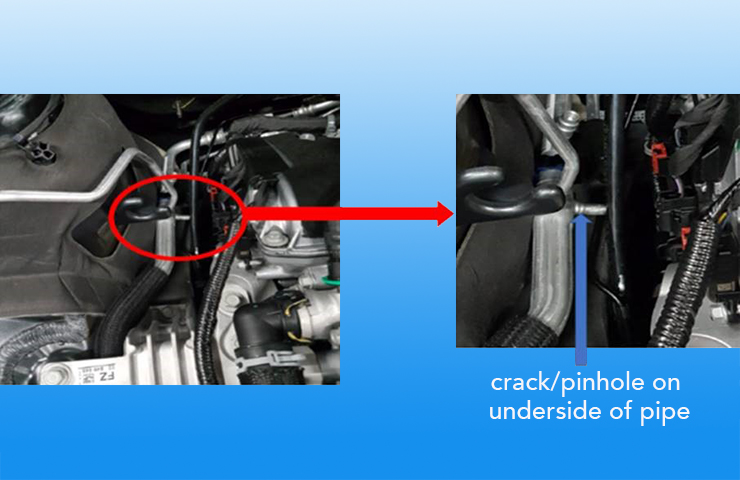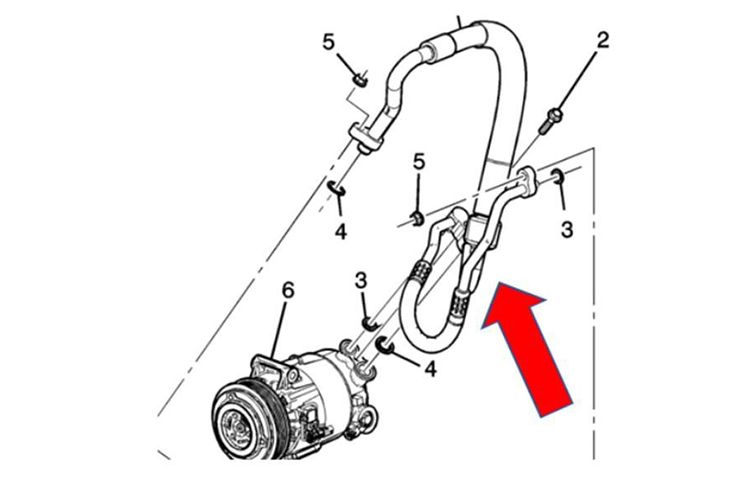Some 2017-2020 Impala models may have an air conditioning system that blows warm air. During diagnosis, it may be found that there is little to no refrigerant in the A/C system.
The refrigerant leak may be due to an inconsistency in the weld process, a welded joint in the evaporator lock ring, a compressor hose, or a low side evaporator line. Any of these sources may have the potential to slowly leak refrigerant over a period of time.
Inspect the low side evaporator line for leaks. (Fig. 21) Allow the A/C system to run for 30 minutes with refrigerant at the specified capacity before attempting to check for leaks. The dye that is installed in pellet form may take about 30 minutes of continuous operation to dissolve and disperse throughout the system.
 Fig. 21
Fig. 21
Also check the joints at the A/C compressor line and the fittings where the line attaches to the compressor and condenser. (Fig. 22)
 Fig. 22
Fig. 22
TIP: Failure of two or more components is not common. Inspect the compressor and evaporator line first before other components.
If the A/C system has low refrigerant or no refrigerant, follow Refrigerant, Recovery and Recharging procedures in the appropriate Service Information.
To help find the source of the leak, follow the leak testing guidelines for R-134a and R1234yf systems. Special tools needed for leak testing may include:
- GE-41447 R-134A A/C Tracer Dye–Box of 24
- GE-42220 Universal 12V Leak Detection Lamp
- GE-43872 Fluorescent Dye Cleaner
- GE-46297 A/C Dye Injector Kit
- GE-50078 Electronic Leak Detector
- GE-50744 R-1234yf PAG Oil Injection Hose
- GE-50745 R-1234yf POE Oil Injection Hose
Once the source of the leak is found, follow the recommended repair procedures in the appropriate Service Information.
Refer to #PIC6380 for additional information and part numbers.
– Thanks to David Goodrow


















